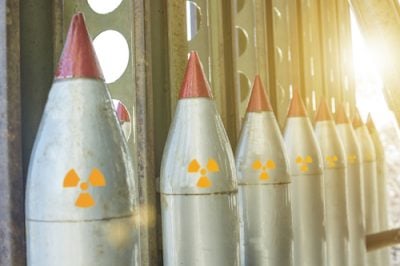US Projected to Spend $117B on Nuke Command and Control in Next Decade

All Global Research articles can be read in 51 languages by activating the Translate Website button below the author’s name.
To receive Global Research’s Daily Newsletter (selected articles), click here.
Click the share button above to email/forward this article to your friends and colleagues. Follow us on Instagram and Twitter and subscribe to our Telegram Channel. Feel free to repost and share widely Global Research articles.
***
Operating, upgrading and maintaining the systems the U.S. Department of Defense relies upon to monitor, ready and launch devastating nuclear weapons is expected to cost $117 billion over the coming decade, according to independent analysis of federal spending plans.
The price tag for nuclear command, control and communications, or NC3, in 2023-2032 marks a $23 billion increase in costs compared to a 10-year estimate made in 2021, the Congressional Budget Office said in a report published July 14. The office updates projections every other year at the direction of lawmakers.
The CBO attributed the increase to a ramping up of nuclear modernization — including the replacement of the E-4B National Airborne Operations Center and E-6B Take Charge and Move Out aircraft — as well as certain items appearing in budgets for the first time.
Northrop Grumman, Lockheed Martin’s Skunk Works and RTX, until recently known as Raytheon Technologies, in April announced they would collaborate on the so-called TACAMO, which provides airborne coordination for the U.S. nuclear arsenal.
The Biden administration promised to beef up NC3 and further protect the no-fail networks from cyber and electromagnetic attack. Newer nuclear arms are expected to enter the stockpile after 2030. With it comes the opportunity to embed contemporary information technology.
:quality(70)/cloudfront-us-east-1.images.arcpublishing.com/archetype/62KHSY7O5FGTXDWN7MTWIANBQ4.png)
The Congressional Budget Office’s projections for nuclear-weapons spending. It features both the Defense and Energy departments. (Screenshot/CBO)
About $756 billion would be spent on the nuclear arsenal between 2023 and 2032 if budget requests from the Defense and Energy departments are fully satisfied, the CBO said. Much of nuclear weapons infrastructure, including development labs and production sites, has deteriorated since the Cold War. Weapons, similarly, are undergoing complex refurbishment regimens, known as life-extension programs, to keep them ticking.
“Nuclear weapons have been an important component of U.S. national security since they were developed during World War II,” the CBO said in its report. “Over the coming years, the Congress will need to decide which nuclear forces the United States should field in the future and thus the extent to which the nation will continue to modernize those forces.”
Lawmakers are seeking a potentially clearer catalog of spending on nuclear command, a topic that is closely guarded. Members of the House strategic forces panel, which oversees nuclear safety, nonproliferation, missile defense and other topics, included in a draft of fiscal 2024 defense legislation a provision establishing a major force program for NC3.
Major force programs are featured in Pentagon budgets as groupings of related efforts and resources. They are one of several lenses through which national security investment can be studied or tracked. Existing collections include research and development and support of other nations.
The Biden administration opposes a budget filter for NC3, believing it to be administratively burdensome and disruptive of work already underway.
*
Note to readers: Please click the share button above. Follow us on Instagram and Twitter and subscribe to our Telegram Channel. Feel free to repost and share widely Global Research articles.
Colin Demarest is a reporter at C4ISRNET, where he covers military networks, cyber and IT. Colin previously covered the Department of Energy and its National Nuclear Security Administration — namely Cold War cleanup and nuclear weapons development — for a daily newspaper in South Carolina. Colin is also an award-winning photographer.

